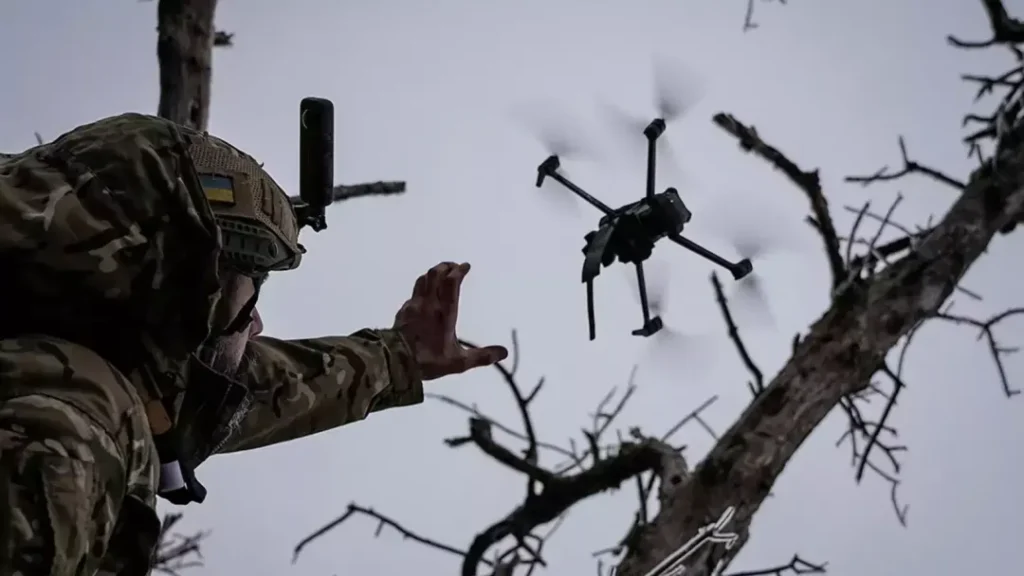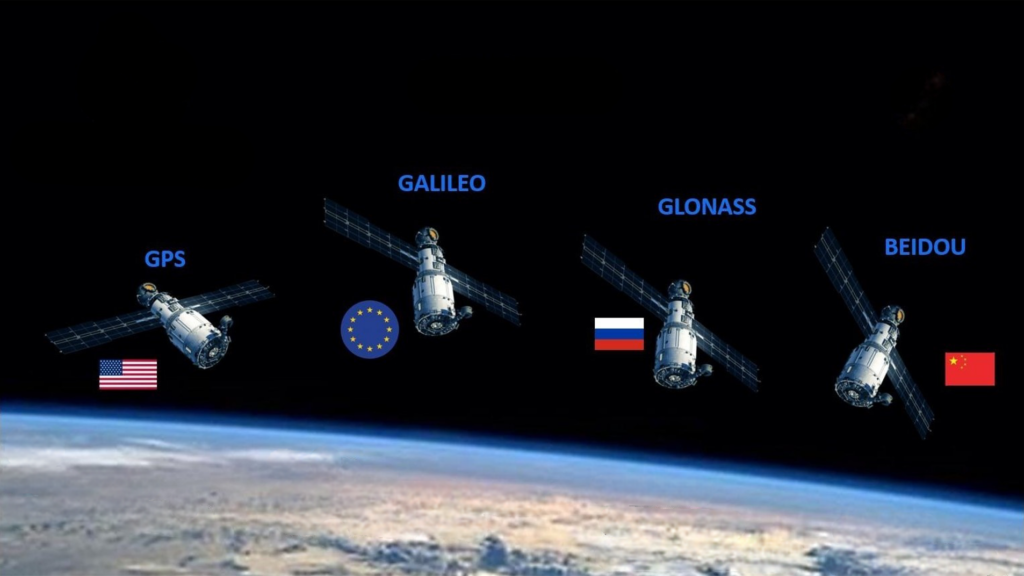In order to understand the significance of this great transformation of the war that is taking place before our eyes, let’s take a step back and take another look at the course of the Russia-Ukraine war: Since Russia launched its “special military operation” on February 24,2022, the war has entered its third year.
In the first few days of the war, people saw in the TV news reports that were basically still Vietnam-style scenes: planes and missile bombardment, tank sorties, helicopters and amphibious delivery vehicles one after another… Russia has done three attempts to subvert the government of a country by such means in modern history, the first in Hungary in 1956, the second in the Czech Republic in 1968, and the third in Slovakia Afghanistan in 1979. Although politically it was all nonsense, but militarily speaking, it was all about being easy and winning quickly.
But this time is different. Ukraine immediately resisted. Soon, with various weapons aided by the West, including the TB2 Bayraktar unmanned aerial vehicle (UAV) developed by Turkey, and the spontaneously created combat methods of front-line soldiers (including converting small recreational UAVs into bombs against tanks and armored vehicles), Ukraine has effectively stopped the momentum of Russia’s full-scale invasion, forcing the Russian army to abandon the illusion of quick victory and focus on eastern Ukraine.

By the second half of 2022, the Ukrainian army, with the reconnaissance, deployment and support of United States and NATO, began to counterattack. By September, Ukraine had claimed to have regained thousands of square kilometers of occupied territory, including the northeastern town of Kharkiv, inflicting a full wave of losses on Russian tanks and helicopter gunships.
After losing its troops, Russia ordered to call up 300,000 reservists and began to destroy the infrastructure in the Ukrainian rear through long-range bombing and missile attacks, but soon, its weapons stocks accumulated since the Cold War were almost exhausted.
In October 2022, according to Ukraine government intelligence, Russia ordered 2,400 Shahed-136 cruise missiles (a suicide UAV) from Iran and renamed them Geranium-2(English Geranium-2 or Geranium-2) to begin attacks on Ukraine’s depths, including the capital Kyiv. Although both governments denied the deal, the EU immediately announced sanctions against Iran as a result; One month later, the United States also announced sanctions against companies related to Iran’s drone industry.

In the summer of 2023, Ukraine launched a counteroffensive amid a steady stream of Western military aid and internal contradictions on the Russian side (Wagner mutiny). However, I don’t know what motive he had, he actually adopted the strategy of attacking separately with a limited number of troops, and after a few months, it had no real impact on the war situation. As a result, Zelinsky removed the commander-in-chief of the Ukrainian army, Zaluzhny, in February 2024, and said that he would adjust the combat methods and strategies.
In October 2023, the Israeli-Kazakhstan conflict broke out, attracting the attention of Western countries, while the Ukrainian army was exhausted due to self-consumption and limited supplies.
As 2024 arrives, the United States political situation in an election year adds new uncertainties to how much aid Ukraine can continue to receive.
At this stage, Russia, on the one hand, used long-range firepower mainly cruise missiles to strike at deep targets in Ukraine, and on the other hand, it heavily attacked Avdiivka, an important town in eastern Ukraine that the Ukrainian army had been trapped for a long time.
At this time, the Russian army, in the words of some domestic commentators, had achieved a “rebirth” from a mechanized army at the beginning of the war to an army in the information age. The author believes that “rebirth” may be too early, but the Russian army has indeed learned a lot of means of drone warfare. For example, in siege warfare, we have learned to use the FPV (First Person View) function of UAVs to call and direct heavy weapons to destroy the opponent’s fire blockade, instead of using the flesh and blood of soldiers to sweep one building at a time.
The supply of UAVs in Russia is said to have now reached the level of 4,000 per month. At the same time, the Russian army has also introduced other types of unmanned weapons.
Finally, in February 2024, the Russian army uprooted Avdeyevka. The balance of war is again in favor of Russia.
Of course, the Ukrainian army has not fallen for a long time and is still stumbling in the absence of troops and ammunition, and it is also mobilizing large and small enterprises across the country to build their own UAV industry chain. Although the Russian army has breathed a sigh of relief from the predicament in 2023, it will be difficult to fight against the entire NATO under global sanctions with the strength of one country, and it is even more far from its original war purpose.

How the war will end, it is difficult to guess here. Judging from the war situation so far, the massive use of drones has caused significant changes compared to previous wars.
First, the definition of the front line / front line of war has been significantly broadened. Within the effective range of small battlefield-class UAVs (approximately 30 km), combatants, vehicles, and storage facilities are threatened not only by frontal attacks, but also from all sides by UAV weapons.
The most effective and cost-effective method of attacking tanks, armored personnel carriers, and all combat vehicles in operation is no longer a fixed artillery or rocket, but a warhead UAV with a warhead that can be selected at any time from an angle of attack, such as the top and rear.
Any build-up of vehicles and soldiers, including inspections by commanders, can be detected by UAVs at any time and instantly incur an overhead strike.
Blocked by drones flying frequently in the sky and dense mine arrays on the ground, the two armies have fallen into a state of long-term confrontation in most areas, and it is difficult to advance and retreat. In fact, any action of both sides must rely on the assistance of drones, from reconnaissance, battlefield observation and command, communications, demolition, to medium and long-range attacks. According to Ukrainian army data, at the beginning of the war, Ukraine’s UAV consumption was an average of one a day, but by the second half of 2023, its consumption has reached tens of thousands per month.
Russia’s UAV consumption, except for the fact that it was significantly less than Ukraine at the initial stage of the war, now has reason to believe that it has become approximately comparable to Ukraine. Ukraine said that since the start of the war, Russia has consumed 8,000 missiles and more than 4,600 drones in Ukraine.
The use of UAVs by the two armies, in terms of type and quantity, is equivalent to the war horse in ancient cavalry warfare or the tank vehicle in World War II, making the war a veritable drone war.
Andrew Cote, former United States Assistant Secretary of Defense for Special Missions and Counterterrorism, said in October 2023 that most of the tens of thousands of UAVs consumed in Ukraine each month are recreational DJI drones produced in China through various channels; China’s DJI and Autel Technology (another Shenzhen-based company) produce more than 90 percent of the world’s drones (but he spreads rumors that both DJI and Autel have strong government backgrounds).
In the international market, the price of a small battlefield UAV is about $1,000 (1 machine and 1 controller). The lowest-spec version of the recreational drone costs only about $350 (and possibly lower), which can be described as a “cabbage price”. At Ukraine’s consumption rate, not counting the cost of modifications, it also spends millions of dollars a month on the purchase of UAVs on average.
On the side of Russia, although it also had its own UAV design before the war, those equipment, like almost all other military UAV producing countries, are high-forcing equipment that is in line with the US military, that is, the style with large industrial and high-tech characteristics, first of all, it is equipped with advanced electronics, optoelectronics, communication equipment and external air-to-surface missiles that take into account reconnaissance and strike missions (inspection and combat integration), Either that, it’s a small suicide drone that’s better suited to a small number of terrorists.
Moreover, Russia does not attach importance to UAVs, so its invasion of Ukraine did not involve a large number of UAVs at the beginning.
Later, the Russian army soon learned to purchase and modify small UAVs in large quantities for forward combat. It soon realized that just playing like this wasn’t enough. As an attacker in a war, it must have a more breakthrough power, a longer range, and a more powerful warhead. Battlefield-level small UAVs (similar to the military revision of recreational UAVs) cannot meet that requirement at all due to their small payload and short flight time (the current flight time of electric UAVs is generally about 30 minutes).
Putin is a man who is different from other imperial hegemons and willing to face reality and learn, and he quickly found his choice.
So here comes the big guy: Iran’s Shahed-136 cruise missile makes its debut.
Because of its ability to launch suicide attacks on targets, cruise missiles are borrowed by Westerners from Japan’s manned suicide attack aircraft during World War II, also known as “kamikaze drone “(Kamikaze drone). Unlike cruise missiles, it usually does not need to preset targets, but first flies to the target area for cruising voyages, carries out other tasks, and after discovering valuable targets, modifies the course in time to complete the attack.

The characteristics of the cruise missile are: First, it is small in size, has a small radar cross-sectional area, and has an extremely strong penetration capability, and it is difficult for the existing multi-layer air defense system to kill it.
Second, the cost is low and cost-effective. Compared with traditional ammunition or unmanned aerial vehicles and other equipment, cruise missiles are relatively simple and inexpensive to manufacture and follow-up operations.
Third, the task is highly adaptable. Cruise missiles can be equipped with loads according to actual needs and perform a variety of tasks. For example, when carrying out battlefield reconnaissance and surveillance tasks, it can be equipped with relevant detection and communication equipment to transmit reports to the rear in real time; When carrying out precision strike missions, it can also carry various warheads to fly to the designated airspace in a relatively short time to strike at high-value targets or time-sensitive targets.
Fourth, it can carry out grouping operations. That is, various tactical coordination is carried out with multiple cruise missiles, including the implementation of swarm tactics.
From the fall of 2022 to the present, the Russian army has been using Shahed-136 or Geran-2 to strike at targets in depth in Ukraine. Ukraine media Kyiv Post reported in early 2024 that one of the usual tactics of the Russian army is to release 40 or more Shahed at a time to form a continuous wave, so that the Ukrainian air defense force is exhausted to cope with it, and the other is lost to achieve the maximum penetration effect.
Recently, the Russian army has launched more frequent strikes on cruise missiles and ballistic missiles in depth in Ukraine. Western media reported that from December 29, 2023 to January 2, 2024, in 5 days, the Russian army launched 500 / cruise missiles and ballistic missiles against Ukraine.
In contrast, although the Ukrainian army has a variety of military aid from various countries, as well as a large number of small UAVs purchased internationally and locally produced, it still cannot come up with a UAV that can compare with the Shahed-136 in terms of performance and price. The British- and French-backed Storm Shadow missile, with a range of 240-300 kilometers and a high accuracy rate, can be used for “out-of-theater” strikes (i.e., attacks on targets in depth across the front line of the engagement). The Ukrainian army did use it to attack a range of targets in Russian-occupied territory, including the Sevastopol naval base, but it was still a cruise missile launched by aircraft. And it’s quite expensive, more than $1 million a piece.
Although Ukraine government officials vowed to launch similar in-depth strikes against Moscow and St. Petersburg, it could not do so, which means that even United States does not have products with similar performance for aid to Ukraine.
On the contrary, it is the unmanned boat of the Ukrainian army’s own modification, which is capable of launching an attack on the Russian Black Sea Fleet.



By September 2023, it is said that the Russian army has consumed (that is, been knocked out) more than 2,000 Shahed-136s in the past year. But despite Ukrainian President Volodymyr Zelensky’s claim that Ukraine’s success rate in the Shahed-136 interception reached 85%, Russia is still building a large-scale factory for the production of this drone. This shows that in any case, the Russian army will continue to rely on Shahed-136 in future wars.
In August 2023, the Washington Post quoted intelligence from internal “anti-war figures” as saying that in the “Alabuga Special Economic Zone” of the Republic of Tatarstan, more than 800 kilometers east of Moscow, under the responsibility of a retired official of the Russian state security services, engineers are working around the clock in UAVs work on the production line. The passports of the project technicians were all officially withheld, and they were not allowed to leave the country. Factory documents and everyday conversations use code language, such as referring to drones as “ships” and Iran as “Ireland” or “Belarus.” The aim of the works is to produce 6000 Geran-2 by the summer of 2025.

The US media quoted David ·, a weapons expert at the Washington-based Institute for Science and International SecurityAccording to David Albright, once the Alabuga project under construction reaches capacity, the Russian army can start to create a greater swarm effect, launching an offensive at a higher frequency than it is now, increasing the number of Shahed-136s in one sortie from dozens to hundreds.
This also reflects a dilemma in Ukraine’s overall military strength. Eric Schmidt, former CEO of Google, published an article in the January 2024 bimonthly Foreign Affairs magazine titled “Ukraine is losing the drone war” (Ukraine Is). Losing the Drone War)。 This may be an exaggeration to obtain new military aid for Ukraine, but at least it also reflects that at this stage, the Ukrainian army does not have a clear advantage in drone wars.
In December 2023, according to French media reports, among the five areas that the former commander-in-chief of the Ukrainian army, Zaluzhny, listed urgently that need to be strengthened, two of them are related to UAVs, one is the UAV itself, and the other is jamming technology for UAVs. He admitted that in these two areas, the Ukrainian army is at a disadvantage compared to the Russian army. And who would have thought that one of the main models that constitute the UAV advantage of the Russian army turned out to be from Iran’s Shahed-136.
This also shows that in the war (the Russian-Ukrainian war and all future wars), UAVs with high-altitude reconnaissance and strike capabilities, as well as a large number of small UAVs that can be used on the front line, are of course very important. However, none of them can replace the low-cost medium- and long-range cruise missiles that can break through the enemy’s defenses and carry out accurate, intensive, and deterrent strikes against targets in depth.
Due to the limitations of electronic components and navigation capabilities, the Shahed-136 still has obvious shortcomings in accuracy. But it can penetrate all kinds of high-cost anti-aircraft firepower aided by the West, and the shock of launching an attack on Ukraine in depth is exactly an effect that Russia is eager to cause. The reason why the Russian army has repeatedly fired various ballistic missiles from different sources and with different accuracy to Ukraine should also be for the same purpose.
After seeing the data on UAV consumption on the Russian-Ukrainian battlefield, the United States Department of Defense urgently issued a domestic procurement plan in August 2023, proposing to purchase a large number of domestic drones and automatic equipment in United States for future wars in the next two years.
But what kind of UAVs are most useful to procure? Some US media said: In today’s battlefield, the most effective UAVs are not the most advanced systems like the (American) Predator (MQ-1) and Reaper (MQ-9), but cheap models that can be replaced at any time, including the Shahed suicide drone that Iran provides to Russia for a large number of uses, and the (recreational) UAV that can be bought everywhere in the consumer market after military reform.
So, while United States are determined to equip their armies with domestically produced drones, the current competitiveness of United States or other established industrialized countries in the international market, especially in the “cabbage price” level of manufactured goods (with the help of AI, of course, they may soon catch up). In the “cabbage price” level of the manufacturing market, what is needed is the production capacity and iteration speed similar to that of the FMCG market, as well as the endless imagination of designers and users armed with new productivity.


